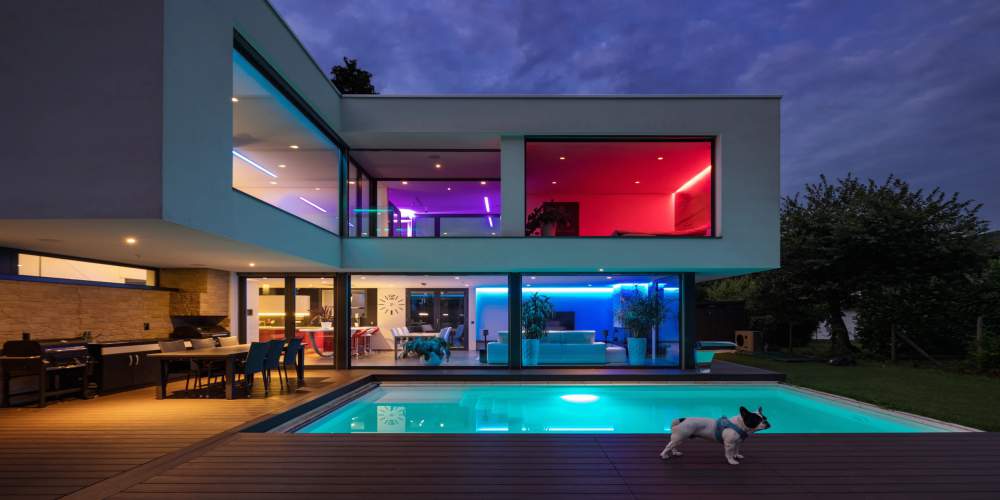Read Time : 3 Minutes
How does LED Lighting Work
One of the great innovations as we move towards as greener future has been the development of LED lighting. Whilst not many people know how it actually works, more of us now have bulbs in our house that are designed to save on electricity and provide a cleaner lighting solution for our everyday needs. To understand how LED lighting works you have to start with what the acronym stands for.
LED is short of Light Emitting Diode. This is basically any semi-conductor that, when an electric current is passed through it, lights up. LED has actually been around in one form or another for a while and you might be surprised at the number of different everyday objects that the technology is used in. It’s used in digital watches and clocks, found in your remote control device, and, bunched together, they produce the image on your TV screen and it is even used to illuminate traffic lights.
Discover about the different types of LED lighting here.
COMPARE PRICES FROM LOCAL INSTALLERS
Compare prices from local companies fast & free
Enter your postcode to compare quotes from leading professionals. We promise to keep your information Safe & Secure. Privacy Policy
How a Light Emitting Diode Really Works
In the past we had what were called incandescent bulbs. These generally had a coiled filament and when electricity was passed through it this heated up, glowed and provided light. If you are over a certain age you will remember clear lightbulbs where you could see the coil glowing.
The problem with these was that they generally weren’t terribly eco-friendly and they also had a limited working life. The good news is that an LED light bulb can outlast an incandescent bulb by as much as 1,000 hours and are now better at producing bright light. A diode is one of the simplest forms of semi-conductor – an object that has the ability to transform varying degrees of electric current in light.
LED lights generally use a semi-conductor called aluminium gallium arsenide that has been doped. Now, doping is a process whereby impurities are added to a material to make it more conductive. In its pure state aluminium gallium arsenide is a poor conductor but, when treated, extra electrons are added which is where everything gets a little more complicated.
There are two types of semi-conductor. N-type has extra electrons or negatively charged particles. A P-type semi-conductor has holes or extra positively charged particles. Electrons essentially move from a negatively charged area to a positively charged area, jumping from hole to hole. Attach a section of N-type and P-type together and you get a diode where, when no current is applied, all the electrons from the N-type fill the holes around the bond of the P-type. This means no free electrons are allowed to flow and the diode remains insulated across an area called the depletion zone.
To remove the depletion zone between the two layers, you need to add an electric current which gets the electrons moving in both directions. This is done by connecting the N-type side of the diode to the negative circuit and the P-type to the positive. This produces an interesting effect – you generate light. It does this because the atoms contain photons which are the basic units of light. It is the movement of electrons which causes these photons to be released. This happens in different ways depending on the materials used.
For instance, diodes used in your remote emit light at an infrared frequency. Other makes are termed VLEDs or Visible Light Emitting Diodes which are used in things like digital watches. In most devices, the light is largely absorbed by the material of the diode so we don’t see much in the way of an emission. In a LED lightbulb, however, the diode is constructed to throw the light outwards and this is enhanced by the plastic housing that produces enough illumination to see by.
The first bulbs did not emit as much light as their incandescent counterparts but over the last few years the technology has developed to the extent that most people are now happy with them. The other benefit from LED lightbulbs is that they don’t have the fragile filament that can easily break and so last longer than incandescent bulbs.
Why are LED Lightbulbs Greener?
The question is why LED lightbulbs are better than the incandescent ones. First of all, they last longer and so present less of a problem with disposal and recycling. Secondly, incandescent bulbs produce most of their energy from heat whilst LEDs are cool to touch and this translates into less wasted energy.
LED light bulbs are more energy efficient – for instance a 4 watt LED bulb is the equivalent of a 25 watt standard bulb. The problem with LED lighting in the first days since it was brought onto the market was that it was far too expensive for most people. Since the year 2000 however the price of semi-conductors has plummeted meaning that many households and businesses can afford to have them installed without breaking the bank.
You can explore the further benefits of LED lighting here.
Find a local installer
Welcome to the biggest directory of UK renewable energy companies





 How does LED Lighting Work
How does LED Lighting Work

